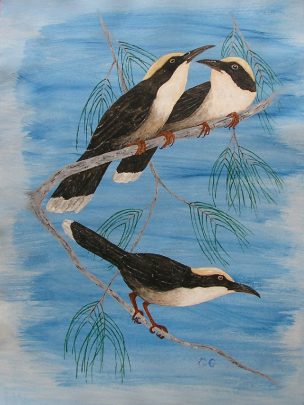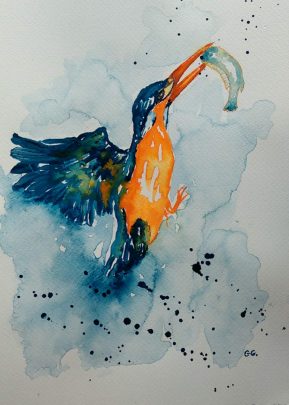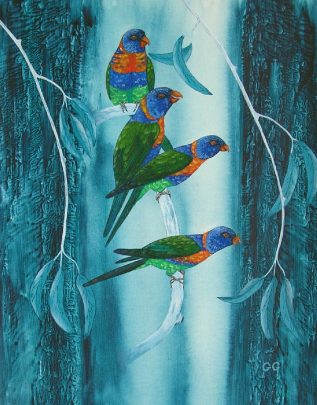When was the last time you saw a willie-wagtail?

A recent 2015 report, “The State of Australian Birds” by Bird-Life Australia, claims our bird population and species numbers continues to decline. As a passionate bird lover, and sometimes bird artist, I have noticed this decline which, for many, may not be so noticeable since Australia is blessed with so many birds and so many bird varieties.
As a child growing up in central Queensland, birds were a big part of my life as I would study them, trap them, breed them and sell and swap them with my friends. As an inquisitive ten year old with an air-rifle I occasionally shot some. Rainbow Lorikeets were my favourites because of the sweetness of their flesh. You could say I have an intimate relationship with birds. Don’t worry, I haven’t eaten any since around 1960, but the few that I did take pales in significance to the sad state of affairs the recent “Bird” report presents.

According to the Bird report many of our popular feathered icons such as Kookaburras, Magpies and Willie-Wagtails have halved in numbers in recent years. I guess this is understandable, but not excusable; as these birds enjoy our urban areas where development and domestic cats are thought to be the main reasons for their gradual demise. But it seems even in our remote arid regions the bird populations are in decline too.
Our carnivorous birds of prey – our top-order birds are declining significantly, which in turn, reflects the poor health of their ecosystems. They are our Canaries in the Cage. “They are a major component of most ecosystems and sensitive to any kind of environmental disturbance” A Bird-Life Australia report says.
With 70% of Australia now being used for mainly sheep and cattle grazing, we are seeing great declines in bird populations in both these arid and marginal lands. This extensive grazing allows us to eat as much meat as we desire. Our huge meat export industry is also responsible for much of this bird loss.
In the hot savannah grazing lands of north Australia our seed-eating finches are in dramatic decline and nowadays bird fanciers are asked to breed the beautiful Gouldian Finch in cages to avoid their extinction. We are told there are more Gouldian Finches now in captivity than in the wild.
But it’s not just the birds of our grazing regions suffering dramatic declines. In our SW and SE wheat belts there is a 60% decline in almost all species. Here, for every 100 hectares of southern woodland cleared, 1,000-2,000 birds die. 80% of our temperate woodlands are now cleared, so you can imagine the toll this had on our bird populations.
Bird-Life Australia calculates the continuing loss of woodland habitat kills at least 3,000,000 birds each year. Surely at this rate of decline we eventually won’t even have a Canary to put in the cage.
I see this as a largely-untold national environmental tragedy and wake-up call.
In spite of decades of work and efforts of our environmental agencies, conservation efforts, experts and legislation we are obviously unable to stem the bird death rate by using the same templates or methodologies used up till now.
I believe we must first come to realise the power of change does not lie wholly with our Governments and their agencies. Here I pose the question: is relying on someone else (Government), to fix this problem simply a cop-out or laziness? I believe we must accept some responsibility for change.

Firstly, do we really care if Australia is no longer the Land Of Birds? If the answer is yes, then we must come up with creative solutions to this ecocide. Obvious solutions would include eating less meat (think of the health benefits): capping our population to halt destructive urban sprawl, legislate to keep domestic cats indoors, create feral animal programs and cease further deforestation for agriculture and grazing.
These are big asks which require huge cultural shifts, but these shifts do place the power of change mainly in our hands and not so much the Government’s. Realise, it was Government agencies which allowed the land clearing in the first place.
If we still wish to enjoy our beautiful birds, who will always be our faithful environmental sentinels – our Canaries in the Cage, we must all take some personal responsibility for their welfare.
In the meantime please enjoy our feathered friends and my bird paintings included here.
To write for Starts at 60 and potentially win a $20 voucher, send your articles to our Community Editor here.








 Proudly Australian owned and operated
Proudly Australian owned and operated